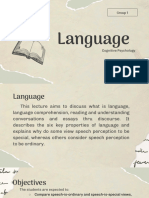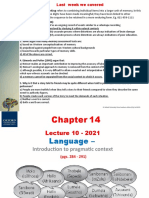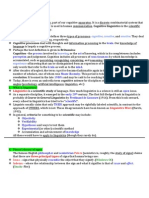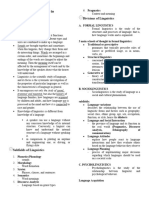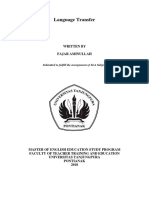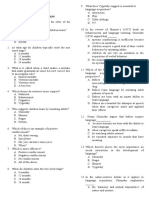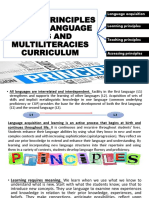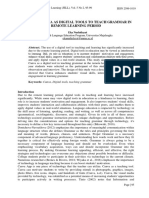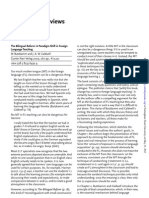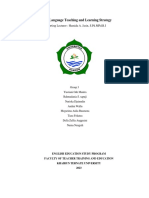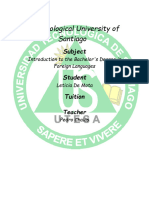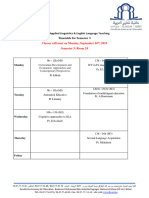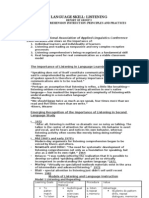0% found this document useful (0 votes)
11 views77 pagesCP - Unit 4 - Language
This document discusses the properties, processing, and acquisition of language, highlighting key components such as syntax, semantics, and phonology. It explores the significance of language in communication, cognition, and cultural transmission, as well as the neurological aspects and disorders related to language. Additionally, it examines the influence of language on perception and memory, along with methods of studying language processing in the brain.
Uploaded by
नकर्मी निभाCopyright
© © All Rights Reserved
We take content rights seriously. If you suspect this is your content, claim it here.
Available Formats
Download as PDF, TXT or read online on Scribd
0% found this document useful (0 votes)
11 views77 pagesCP - Unit 4 - Language
This document discusses the properties, processing, and acquisition of language, highlighting key components such as syntax, semantics, and phonology. It explores the significance of language in communication, cognition, and cultural transmission, as well as the neurological aspects and disorders related to language. Additionally, it examines the influence of language on perception and memory, along with methods of studying language processing in the brain.
Uploaded by
नकर्मी निभाCopyright
© © All Rights Reserved
We take content rights seriously. If you suspect this is your content, claim it here.
Available Formats
Download as PDF, TXT or read online on Scribd
/ 77




























